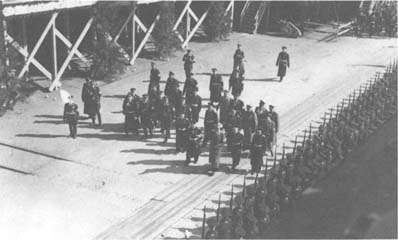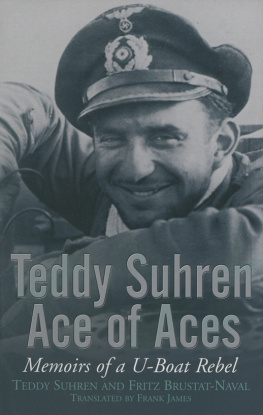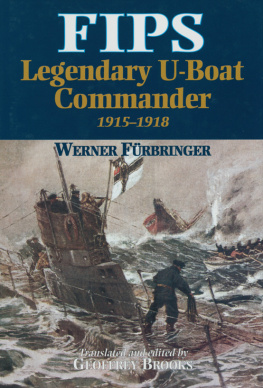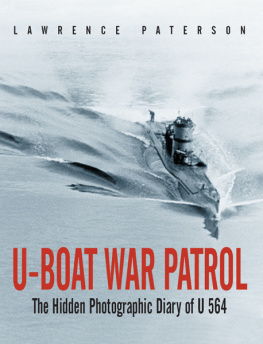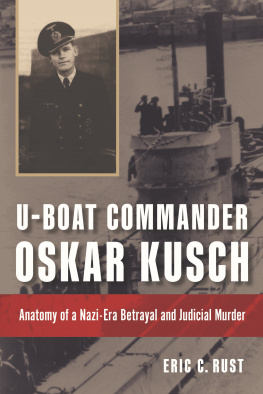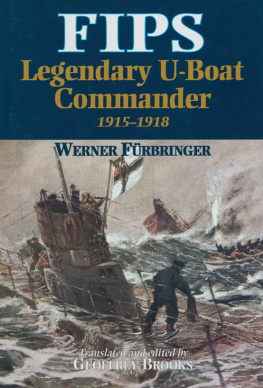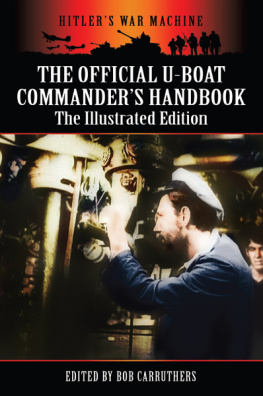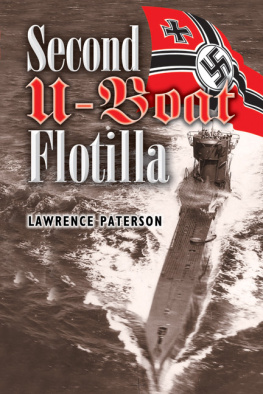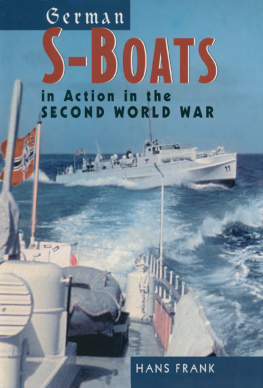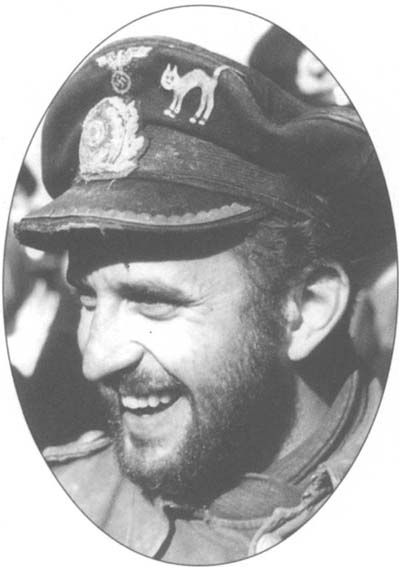TEDDY SUHREN: ACE OF ACES
TEDDY SUHREN
ACE OF ACES
Memoirs of a U-Boat Rebel
Teddy Suhren and Fritz Brustat-Naval
Translated by Frank James
FRONTLINE BOOKS, LONDON
CHATHAM PUBLISHING
NAVAL INSTITUTE PRESS
Annapolis, Maryland
Teddy Suhren: Ace of Aces, Memoirs of a U-Boat Ace
CHATHAM PUBLISHING
LONDON
A Chatham Book
This edition published in 2011 by
Frontline Books, an imprint of Pen & Sword Books Limited,
47 Church Street, Barnsley, S. Yorkshire, S70 2AS
www.frontline-books.com, email info@frontline-books.com
and
Published and distributed in the United States and Canada by the
Naval Institute Press
291 Wood Road, Annapolis, Maryland 21402-5034
www.nip.org
Translation copyright Frank James, 2006
This edition Pen & Sword Books Ltd., 2011
UK edition: ISBN 978-1-84832-613-2
US edition: ISBN 978-1-59114-851-7
PUBLISHING HISTORY
Teddy Suhren: Ace of Aces was first published in Germany as Nasses Eichlenlaub
by Khlers Verlagsgellschaft in 1983. It was first published in English by
Chatham Publishing in 2006.
All rights reserved. No part of this publication may be reproduced, stored in
or introduced into a retrieval system, or transmitted, in any form, or by any
means (electronic, mechanical, photocopying or otherwise) without the prior
written permission of the publisher. Any person who does any unauthorized
act in relation to this publication may be liable to criminal prosecution and
civil claims for damages.
A CIP data record for this title is available from the British Library.
Library of Congress Control Number: 2005938190
For more information on our books, please visit www.frontline-books.com,
email info@frontline-books.com or write to us at the above address.
Printed in Great Britain by CPI Antony Rowe.
Contents
Kriegsmarine
Groadmiral = Admiral of the Fleet
Admiral = Admiral
Kommodore = Commodore
Kapitn-zur-See = Captain
Fregattenkapitn = Captain (junior)
Korvettenkapitn = Commander
Kapitnleutnant (Kaleu)= Lieutenant Commander
Oberleutnant zur See = Lieutenant
Leutnant zur See = Sub-Lieutenant
Oberfhnrich zur See = Senior Midshipman
Fhnrich zur See = Midshipman
Obersteuermann = Chief Quartermaster
Oberbootsmann = Boatswain
Bootsmaat = Boatswains mate
Others
Generalfeldmarschall = Field Marshal
Abwehr = German Military Intelligence
BdU = Befehlshaber der Unterseeboote = Commander of U-Boats
FdU = Fhrer der Unterseeboote = Leader of U-Boats
Kaleu = short for Kapitnleutnant
KC = Knights Cross
KK = Korvettenkapitn
LI = Chief Engineer
OdM = Oberbefehlshaber der Marine = Commander-in-Chief of the Navy
PK = Propagandakompanie = War reporters and photographers
SD = Sicherheitdienst = SS intelligence and security police
Strkorl = slang for Obersteuermann
ULD = Submarine Training Division
WO = Watch Officer: 1WO therefore is 1st Watch Officer, ie First Lieutenant
THIS TRANSLATION OF REINHARD (Teddy) Suhrens memoirs (entitled in the original German Nasses Eichenlaub (Wet Oak Leaves)) was the by-product of researching a fascinating collection of 362 photographs taken on Suhrens last patrol with U-564 in 1942; most of this collection, which surfaced in Yorkshire in 2000, has now been reproduced in U-Boat War Patrol, with an excellent and comprehensive accompanying narrative by Lawrence Paterson. I am grateful to him and Sarah for their company on a whistle-stop tour of Germany, and for checking the typescript of this book for U-boat terminology; to Gudmundur Helgason of uboat.net and all its many and knowledgeable forum participants for parting with so much helpful information; to Debbie Corner of the RN Submarine Museums photographic archive, where the photos now reside, for permission to use some of her scans of the originals; to Erich Topp for welcoming us so warmly in his home in Remagen and finding time to talk about his wartime experiences; to the Zweibrcken Marinekameradschaft in Niederauerbach, which still bears Teddy Suhrens name, for their continuing friendship and hospitality, and in particular to Dietmar Hoefert and Helmut Herzig for making scans of so much of their own Teddy Suhren Archive for Lawrence and myself; to Horst Bredow of the U-Boat Archiv in Cuxhaven for allowing us to access his unique collection of material; to my old friend Ian Popely a much better German speaker than myself for checking the translation for linguistic howlers; to Rob Gardiner and all those at Chatham Publishing for making the whole process of publication so painless; and to my long-suffering wife for her patience while this book has been in the making. Acknowledgement must also be made to Fritz Brustat-Naval, who conducted the interviews with Teddy Suhren in the early 1980s on which the original Nasses Eichenlaub was based. The illustrations used here, many of which appeared in the original Nasses Eichenlaub, have come from a variety of sources; all reasonable effort has been made to obtain permissions but if there has been any unwitting infringement of copyright I can only apologise, as indeed for any inaccuracies or misinterpretations in the text, for which ultimately I must take responsibility. Finally, I should like to dedicate this book to Teddy Suhrens widow, Frau Hannelore Suhren, and her daughter Gesa; without their warm welcome, their enthusiasm and their encouragement it would never have reached the shelf.

Battleships and the GRFAZ How long
would the war last?
WE BEGIN IN SPRING 1941. In the naval base on the Baltic then known as Gotenhafen [now Gdynia in Poland] lay what were in their day the two biggest battleships in the world: the Bismarck and her sister-ship the Tirpitz. With an overall length of 251m [823ft] and beam of 36m [118ft], these giants had a displacement of 41,700 tons. Their heavy armament, twin guns mounted in four turrets, was of 38.1cm [15in] calibre and had a range of around 36kms [22 miles]; each shell weighed 798 kilos [1,760lbs]. Where they struck, no grass grew again. The ships armour plating, made from Krupps steel up to 320mm [12.5in] thick, made them virtually indestructible. They amounted at the time not just to the biggest but also to the most powerful ships of any navy in the world, and were just about invincible. In a word, they were floating fortresses. Their threat was increased by their ability to cruise from their base at 30 knots, driven by 150,000HP and three screws, and to operate over an area of sea as far as South America and back. In strategic terms they were intended for an ocean-going role, to intercept the enemys merchant shipping in the Atlantic.
